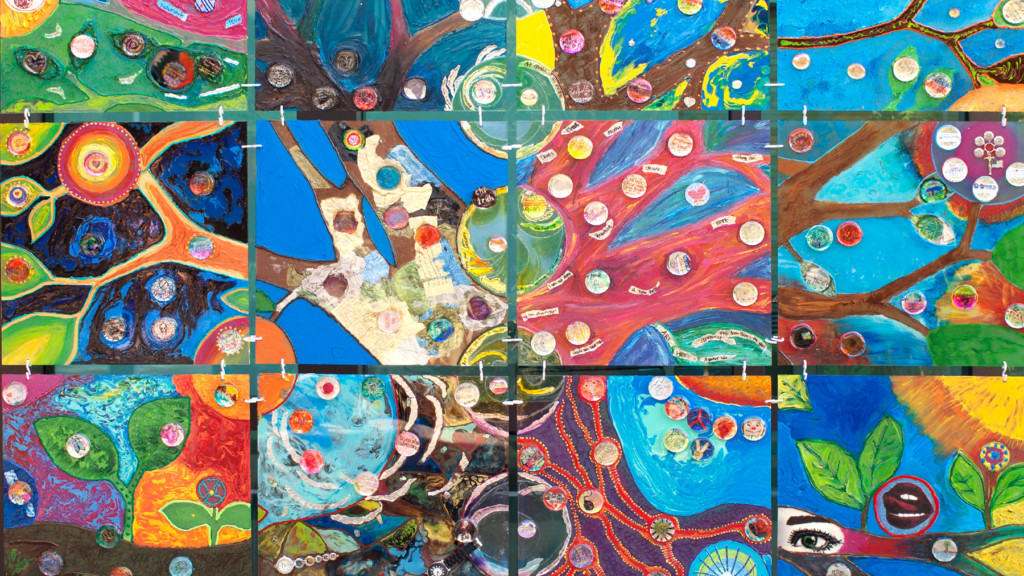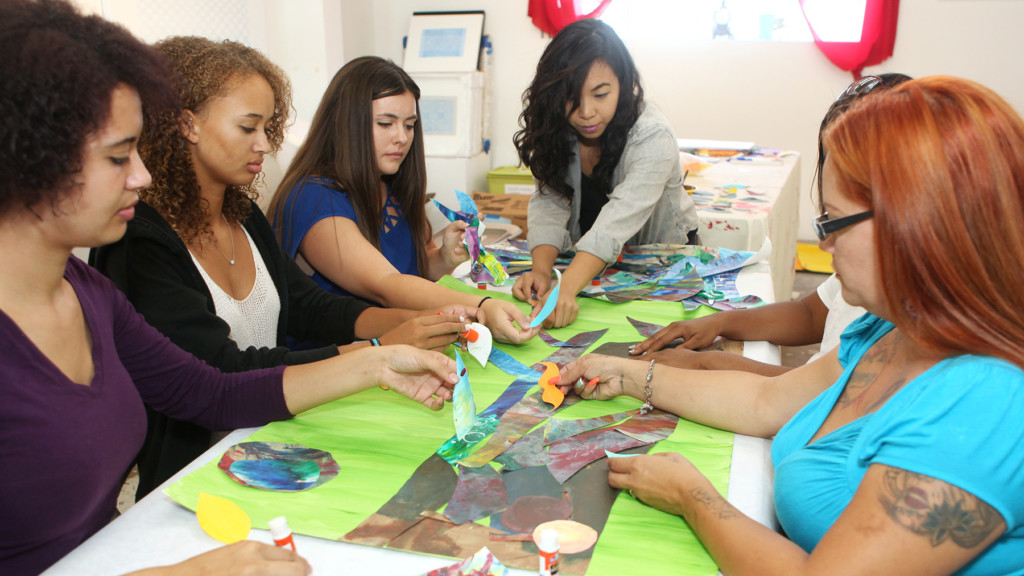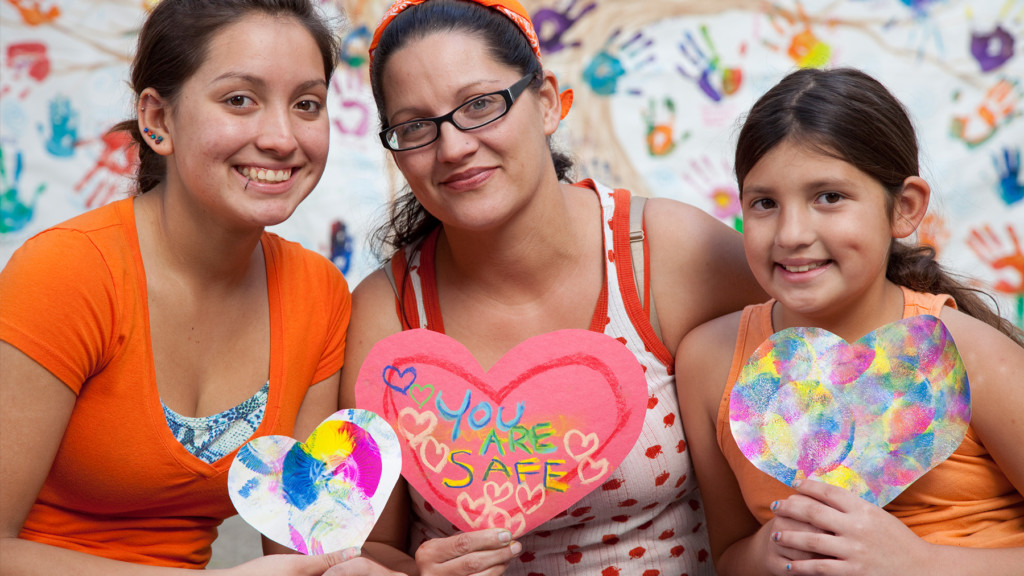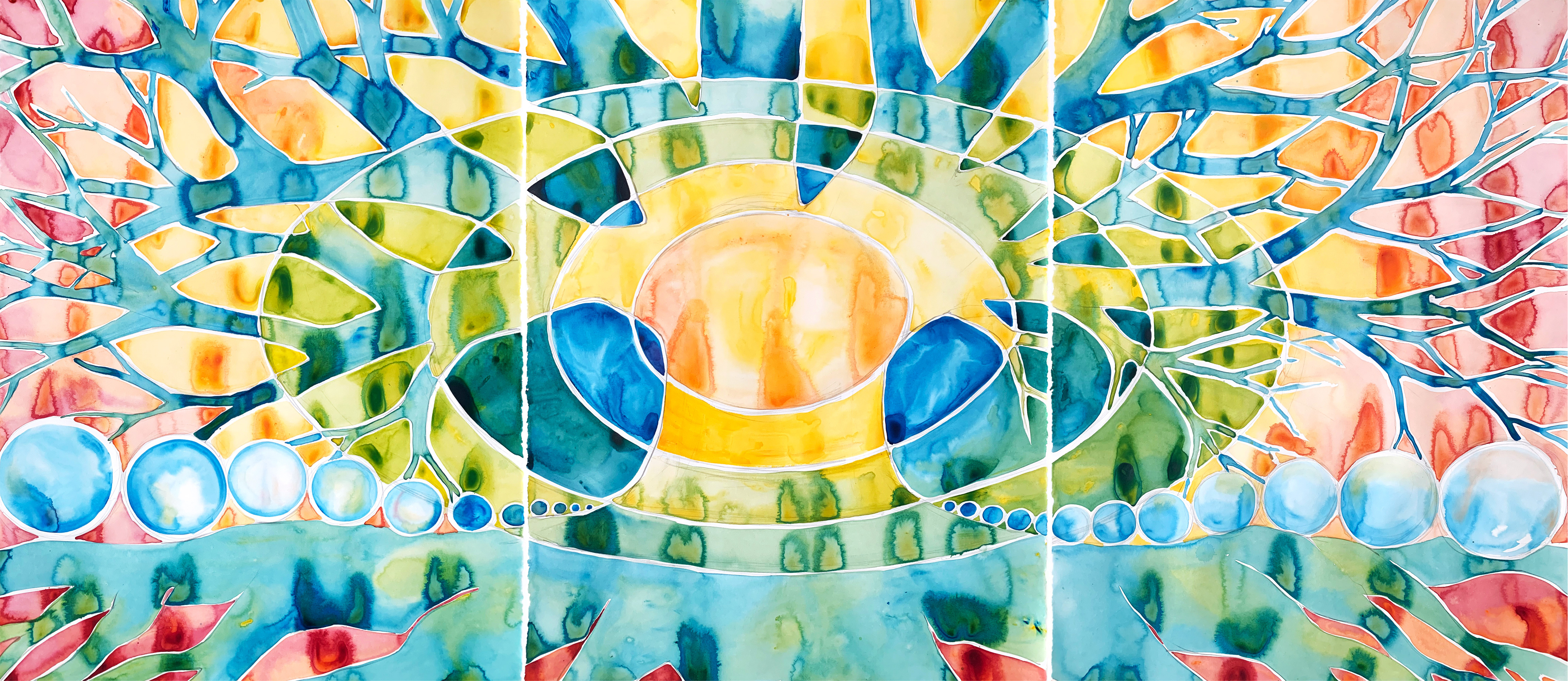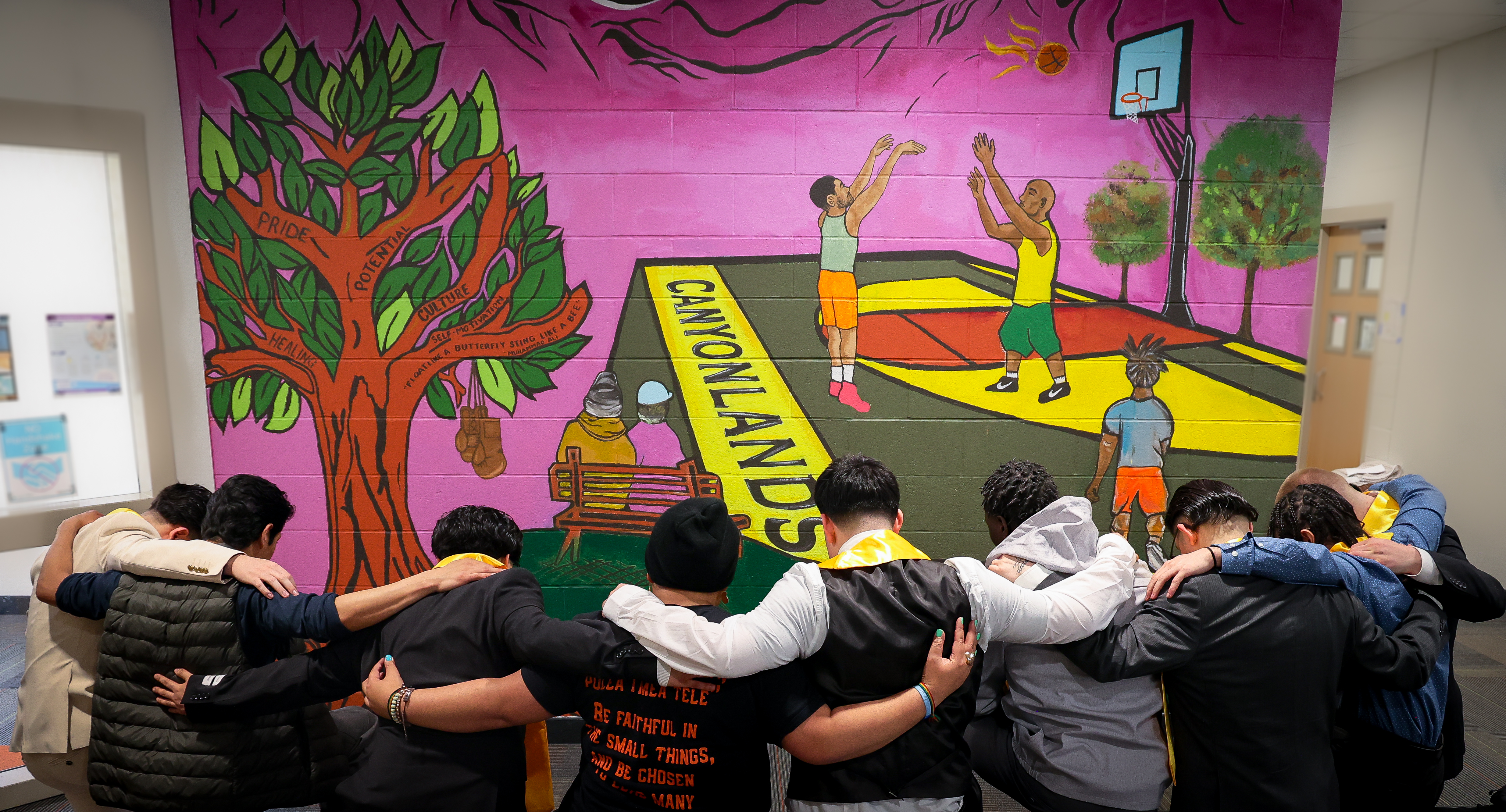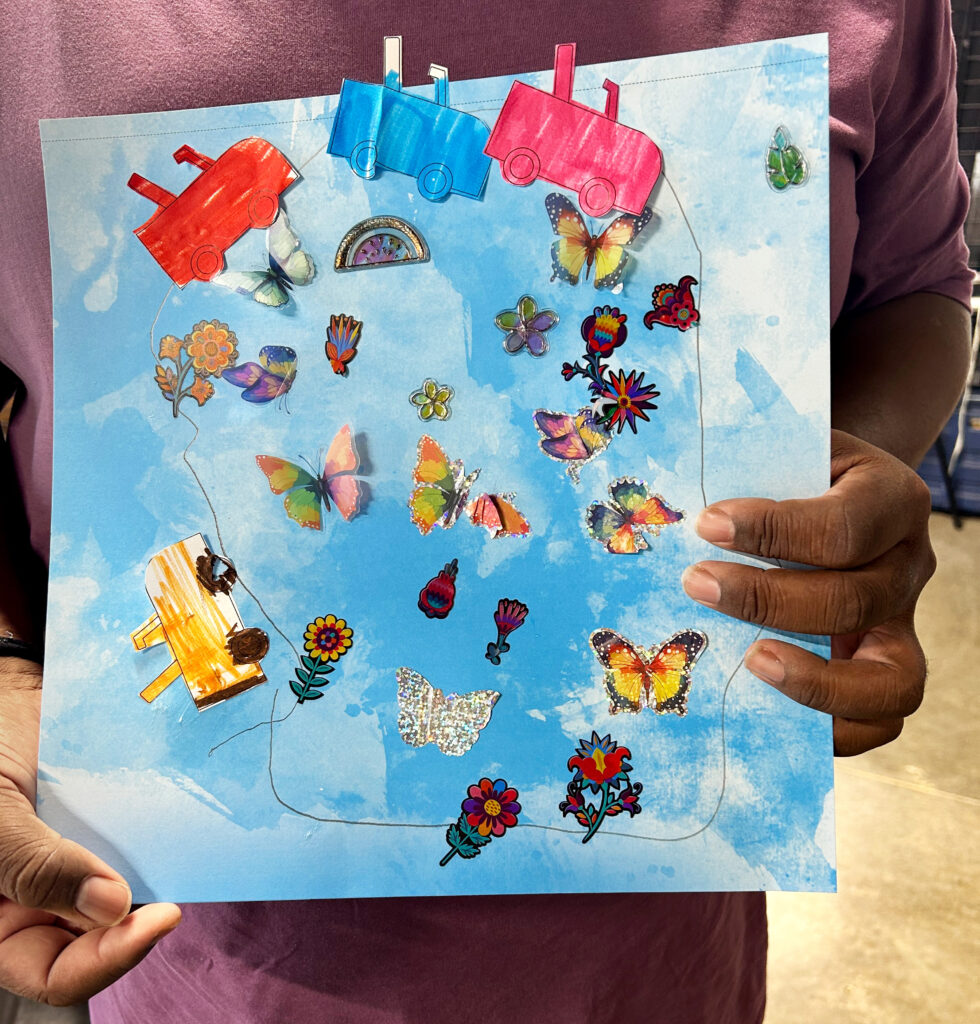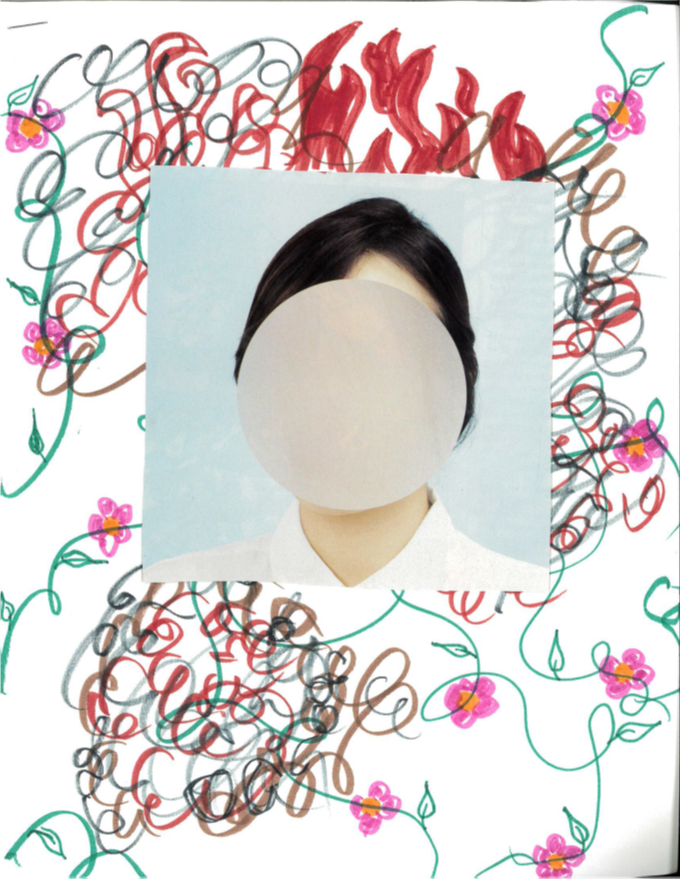I come from a large Tongan family, with my parents among the first to arrive in America. As relatives joined us seeking a better future, many struggled with drugs, gangs, language barriers and abuse. I witnessed severe domestic and emotional abuse, and saw many cousins cycle through the juvenile system.
Noticing the stark, uninspiring blank walls that they were seeing 24/7 in juvenile detention, a cousin’s sarcastic remark about painting them with “unicorns, hearts and rainbows” inspired me to take on that challenge personally.
Over 10 years of visits, we discussed mural designs. I asked what they’d want to see each day in juvie. Many cousins and friends wanted something motivational and culturally relevant to counter their feelings of shame, defeat, and longing for their families.
So when I was hired to do a motivational mural with incarcerated youth aged 12-24 at the Weber Valley Youth Center in Utah, the project had special meaning for me. Many of the youth have been harmed by trusted adults in their lives and are in and out of group homes and foster care, and facing severe challenges like grief, addiction, poverty, homelessness and violence.
Initially, they were cautious about the mural painting program. They were distant and guarded during the mural painting sessions and had their guards up high.
But when I used some of the trauma-informed techniques from my AWBW training, I was able to create a safe, non-judgmental environment. I knew I wanted the project to be student-led, for them to be equal contributors to the vision and planning for the mural. And that I wanted to teach them art skills but also entrepreneurship skills if mural work was something they wanted to pursue.
We had workshops where they learned about project management, community identity and other concepts that go into mural work. I also spent individual time with each, offering support and mentorship. One youth, who had skipped breakfast that day to work on the mural, talked to me during a snack break. We shared a poignant moment, connecting through tears and conversation as he opened up to me about feeling unworthy. He said, “I messed up. This is the least I can do to make things right. I can participate in this mural experience and help uplift the next generation.”
He went on to teach painting techniques and volunteered to speak at the mural reveal event. As he felt safer and more supported, his confidence grew, and he could start to process the grief, regret and shame he felt. The experience helped him forgive himself and others.
Over time, the youths’ attitudes improved. As they engaged in the activity, they started to take pride in their work. When it was time for the celebration unveiling the mural, they walked in dressed in their best formal clothes with their heads held high. For some of them, it was the first time they had ever felt proud of themselves.
The mural painting program led to greater self-awareness and a desire for improvement in both the students and myself as the facilitator. We called our mural “Watch Us Grow.”
